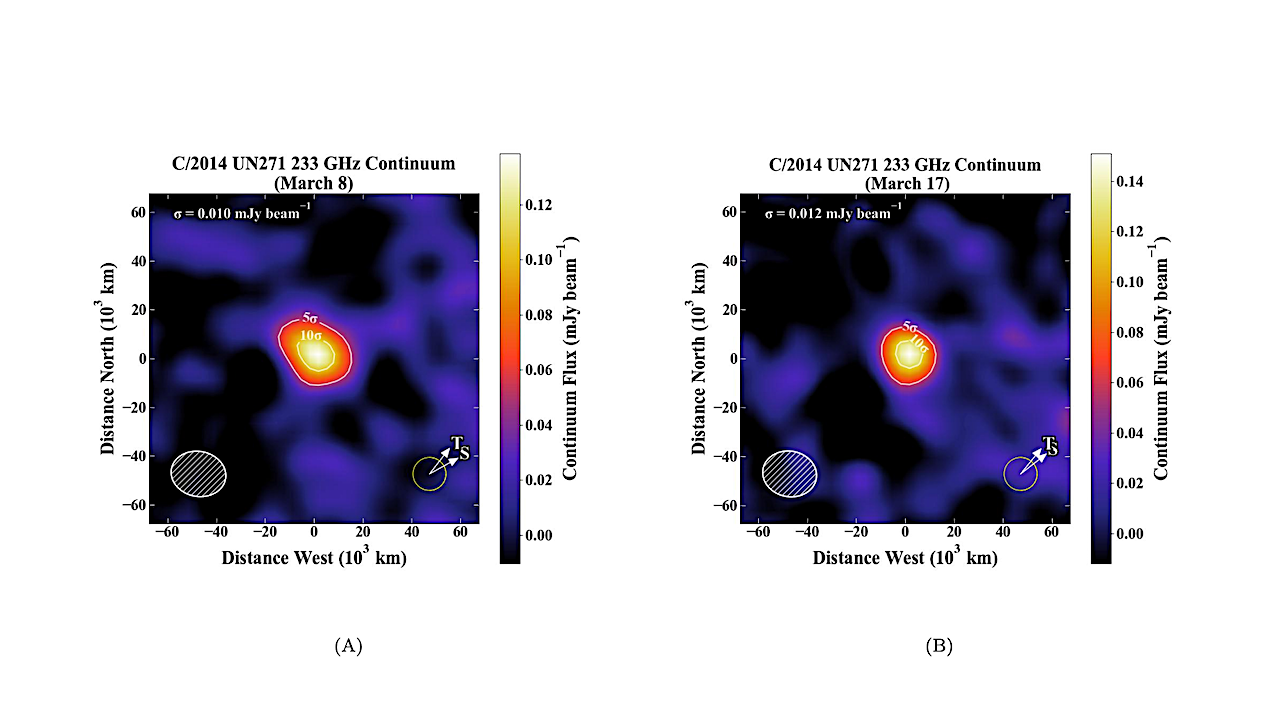(A)–(B). Continuum flux maps for CO on 2024 March 8 and 17, with traces and labels as in Figure 1). Contour intervals in each map are in 5σ increments of
Hot Posts236- Page
As Charles Darwin explored the Galapagos Islands, he discovered how the different islands allowed for different species to thrive. This is very similar to our current exploration of the Solar
6 Min Read A Defining Era: NASA Stennis and Space Shuttle Main Engine Testing The numbers are notable – 34 years of testing space shuttle main engines at NASA’s Stennis
A powerful and mysterious blast of radio waves that astronomers believed was a fast radio burst (FRB) from far beyond the limits of the Milky Way has turned out to
The conceptual scheme outlines the primary prerequisites for habitability in ocean worlds, highlighting the importance of water, energy, CHNOPS, and TMs. The horizontal bar on the bottom denotes our assessment
China launched a a trio of satellites into orbit over the weekend. A Long March 6A rocket lifted off from the Taiyuan Satellite Launch Center in northern China on Sunday
TAMPA, Fla. — BAE Systems has partnered with South Korean conglomerate Hanwha Systems to explore using its synthetic aperture radar (SAR) technology in Azalea, the British defense prime’s planned intelligence,
Population III stars are the first generation that formed in the Universe, made from pristine hydrogen and helium, without any heavier “metals.” They’re difficult to find, surrounded by the early
Asteroids are small rocky bodies, left over from the formation of the solar system. Most orbit in the asteroid belt between Mars and Jupiter, but some sweep near Earth. Learn
SpaceX’s Starship megarocket will fly again next week, if all goes according to plan. Elon Musk announced that timeline target in a Tuesday evening (May 13) X post, which also
-
 012024 in Review: Highlights from NASA in Silicon Valley
012024 in Review: Highlights from NASA in Silicon Valley -
 02Panasonic Leica Summilux DG 15mm f/1.7 ASPH review
02Panasonic Leica Summilux DG 15mm f/1.7 ASPH review -
 03From Polymerization-Enabled Folding and Assembly to Chemical Evolution: Key Processes for Emergence of Functional Polymers in the Origin of Life
03From Polymerization-Enabled Folding and Assembly to Chemical Evolution: Key Processes for Emergence of Functional Polymers in the Origin of Life -
 04How New NASA, India Earth Satellite NISAR Will See Earth
04How New NASA, India Earth Satellite NISAR Will See Earth -
 05And Thus Begins A New Year For Life On Earth
05And Thus Begins A New Year For Life On Earth -
 06Astronomy Activation Ambassadors: A New Era
06Astronomy Activation Ambassadors: A New Era -
07SpaceX launch surge helps set new global launch record in 2024















